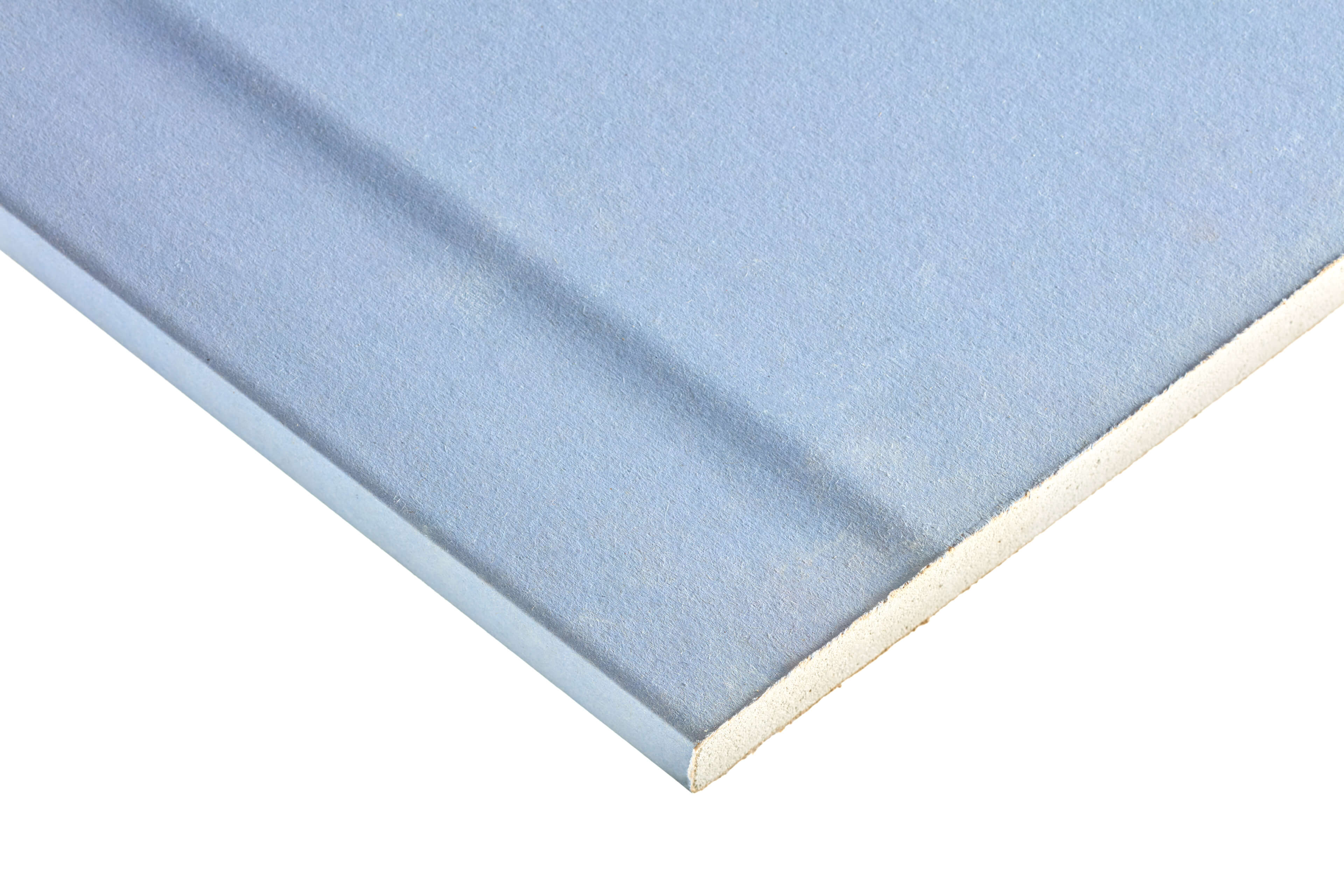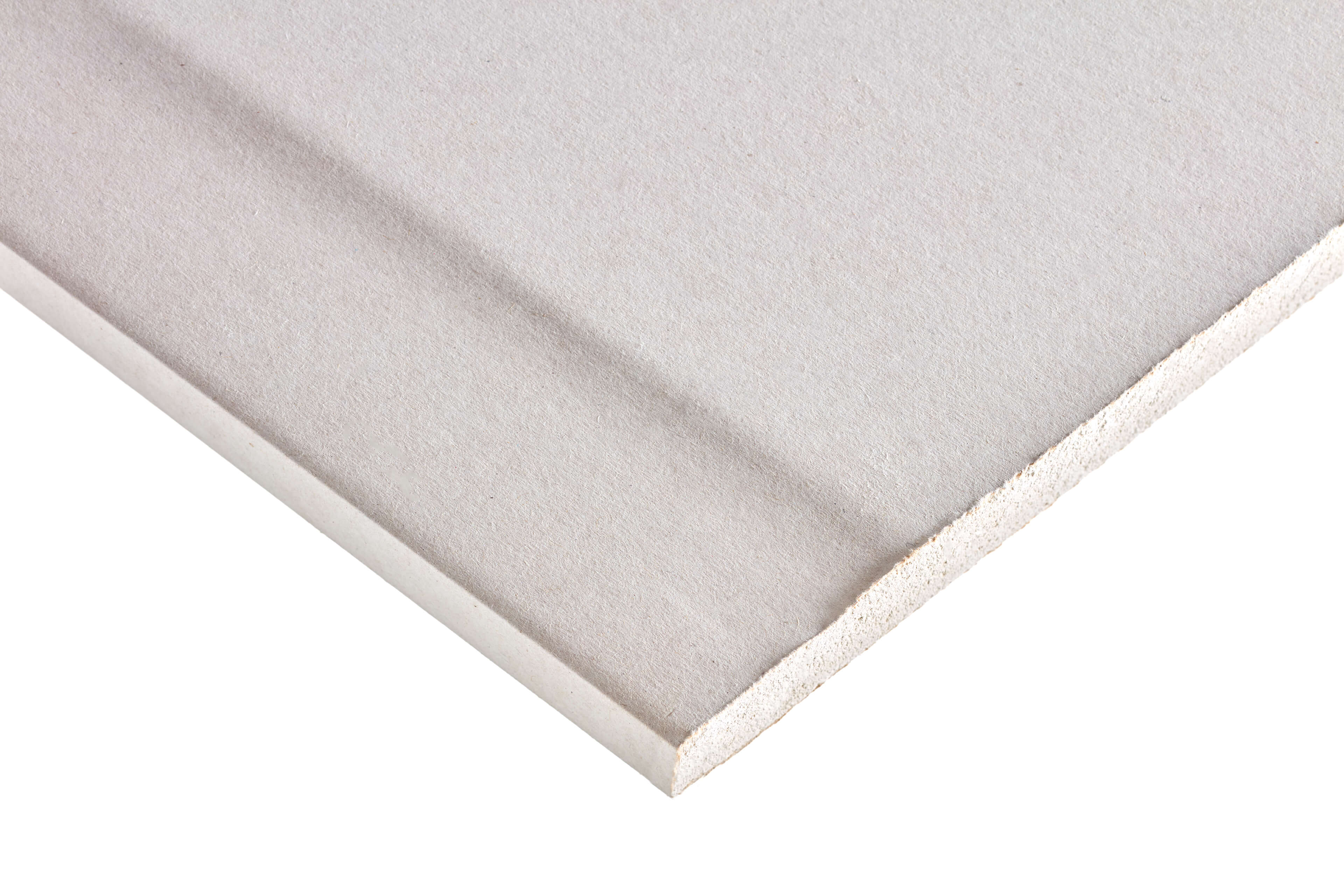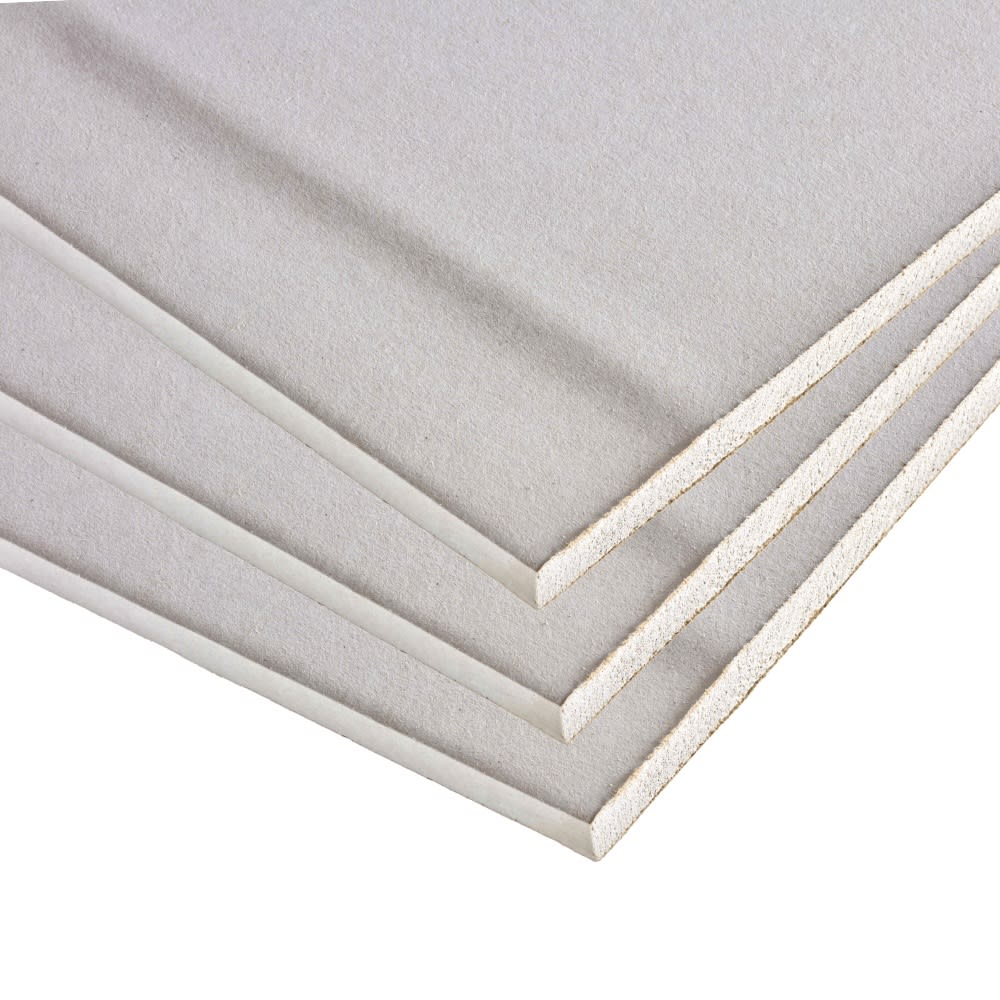Tapered Edge Plasterboard
(29 Products)Tapered edge plasterboard is a widely used internal lining board designed for creating smooth, level surfaces with minimal visible joints. Its tapered edges simplify taping and jointing, enabling flush finishes that are ideal for painting or wallpapering. It’s commonly installed on stud partitions and masonry walls as part of drylining systems, offering a time-efficient solution for preparing interiors.
In ceiling applications, tapered edge boards help form large, uninterrupted planes that support a neat decorative finish and effective light distribution.
What is Tapered Edge Plasterboard?
Tapered edge plasterboard is a standard type of gypsum plasterboard specifically designed for creating smooth, seamless internal wall and ceiling surfaces.
Its distinguishing feature lies in its long edges, which are subtly recessed or 'tapered' inwards, forming a slight depression when two boards are butted together.
This unique design creates a shallow channel along the joint, which is precisely engineered to accommodate jointing tape and successive layers of jointing compound.
This allows for the creation of a perfectly flat and continuous surface once finished, unlike square edge plasterboard which requires alternative jointing methods.
Applications
- Internal Walls: The most common use is for constructing new internal partition walls or lining existing masonry walls (e.g., using the "dot and dab" method with plasterboard adhesive).
- Ceilings: Widely used for creating flat, smooth ceilings in residential and commercial properties.
- Room Linings: For lining garages, basements, or any other internal space that requires a plasterboard finish.
- Bulkheads and Features: Ideal for building decorative bulkheads, boxing in pipes, or creating recessed features where clean, sharp, and seamless lines are important.
Benefits
Tapered edge plasterboard is highly favoured for its practical advantages in achieving high-quality finishes:
- Seamless Finish: The primary benefit is its ability to create a perfectly smooth, uninterrupted surface. The tapered edges provide the ideal recess for jointing materials, making the finished joint virtually invisible.
- Efficient Jointing: It streamlines the jointing process. The taper allows for easy embedding of jointing tape and subsequent application of jointing compound without creating a bulge on the surface.
- Reduced Finishing Time: While jointing still takes time, the design reduces the need for extensive sanding across the entire board surface, as the build-up of compound is concentrated within the tapered area.
- Versatility: Suitable for a wide range of internal applications, including walls, ceilings, and bulkheads, where a smooth decorative finish is required.
- Cost-Effective: As a standard plasterboard type, it offers a cost-effective solution for creating flat, paintable surfaces.
- Easy to Decorate: Once jointed, sanded, and primed, the smooth surface provides an excellent base for painting, wallpapering, or other decorative finishes.
Types and Common Sizes of Tapered Edge Plasterboard
While the core principle of tapered edges remains consistent, these boards are available in various types and common dimensions to suit different project needs:
- Standard Wallboard: The most common type, typically in thicknesses of 9.5mm, 12.5mm, and 15mm.
- 9.5mm: Often used for ceilings or for lining lightweight partitions where specific performance criteria are not stringent. Lighter and easier to handle.
- 12.5mm: The most versatile and widely used thickness for general wall and ceiling applications. Offers a good balance of strength, weight, and acoustic/thermal performance.
- 15mm: Provides increased strength, rigidity, and often improved acoustic or fire performance compared to 12.5mm, suitable for areas requiring a more robust finish.
- Fire-Resistant Tapered Edge Plasterboard (Pink/Red Face): These boards have a gypsum core reinforced with glass fibres and other additives to provide enhanced fire resistance. They still feature tapered edges for seamless finishing. Available in 12.5mm and 15mm, and are crucial for meeting fire compartmentation requirements.
- Moisture-Resistant Tapered Edge Plasterboard (Green/Blue Face): Featuring additives in the core and often treated paper liners, these boards offer improved resistance to moisture and humidity. Ideal for bathrooms, kitchens, and other areas prone to dampness. Also available with tapered edges for seamless finishing.
- Acoustic Tapered Edge Plasterboard (Blue Face): Designed with a higher density core to improve sound insulation performance. These also come with tapered edges for a smooth finish while contributing to acoustic privacy.
- Impact-Resistant Tapered Edge Plasterboard: Features a denser, more robust core for increased resistance to accidental damage, suitable for high-traffic areas.
- Common Board Dimensions:
- Widths: Standard widths are 1200mm (4 feet) and 900mm (3 feet).
- Lengths: Common lengths include 2400mm (8 feet), 2700mm (9 feet), 3000mm (10 feet), and 3600mm (12 feet). Specific lengths may vary by manufacturer and region.
How Tapered Edge Plasterboard is Made
- Gypsum Core Formation: A slurry of gypsum plaster, water, and various additives (such as starches, paper pulp, and foaming agents) is mixed.
- Paper Liner Application: This gypsum slurry is then continuously poured and spread evenly between two sheets of specialiSed paper liner (a stronger, heavier paper for the face and a slightly lighter paper for the back).
- Edge Formation: As the wet board moves along the production line, rollers are used to compress and shape the long edges of the board, creating the characteristic taper. The short (cut) ends typically remain square.
- Setting and Drying: The gypsum quickly sets as it hydrates. The semi-rigid board is then cut to desired lengths and passes through drying kilns to remove excess moisture, achieving its final strength and rigidity.
- Finishing: Once dry, the boards are stacked, bundled, and prepared for distribution. The paper face of standard tapered edge plasterboard is typically cream or ivory in colour.
Maintenance and Longevity
Once installed and decorated, tapered edge plasterboard requires minimal ongoing maintenance.
- Durability: The gypsum core and paper liners are robust and designed to last for the lifetime of the building under normal indoor conditions.
- Repairing Damage: Minor dents or holes can typically be repaired using standard drywall filler and sanded smooth. Larger areas of damage might require cutting out and replacing sections of the board, followed by re-jointing and finishing.
- Protection: Avoid prolonged exposure to high moisture (unless using moisture-resistant variants) or direct impact.
Frequently Asked Tapered Edge Plasterboard Questions
Can I Apply A Skim Plaster Finish To Tapered Plasterboard?
Yes, tapered edge plasterboard is entirely suitable and frequently used as a substrate for a skim plaster finish.
While its primary design facilitates a direct taped-and-jointed seamless finish without requiring a full plaster skim, the robust paper face and stable gypsum core provide an excellent base for the adhesion of gypsum-based finishing plasters.
When a full skim is applied (typically 2-3mm thick), the tapered edges effectively provide a subtle, consistent recess that can aid the plasterer in achieving a perfectly uniform and flat surface across the entire board. This negates the need for any complex build-up of jointing compound within the taper, as the full skim coat will uniformly cover all joints and board faces.
This method is often preferred for achieving a more durable, exceptionally smooth, and hard-wearing surface compared to a purely taped-and-jointed finish, particularly in high-traffic areas or where a traditional plaster aesthetic is desired.
Does Tapered Edge Plasterboard Offer Any Acoustic Or Thermal Insulation Benefits?
Standard tapered edge plasterboard itself provides only minimal inherent acoustic or thermal insulation benefits. Its primary function is to create a smooth surface for decoration.
- Acoustic Performance: A standard plasterboard partition offers some basic sound attenuation simply due to its mass. However, to achieve significant acoustic insulation (soundproofing) that meets building regulations or specific performance targets, the entire system must be designed for acoustics. This typically involves:
- Using higher density acoustic plasterboard (often with a blue face, still available with tapered edges).
- Incorporating acoustic mineral wool insulation within the wall cavity.
- Utilising resilient channels or acoustic battens to de-couple the plasterboard from the framing.
- Ensuring meticulous airtightness and sealing of all penetrations.
- Thermal Performance: For effective thermal insulation, you need to incorporate dedicated insulation materials such as mineral wool, PIR, or EPS boards within the wall, roof, or floor cavities, or as external/internal insulation layers.
While tapered edge plasterboard forms the finish, its performance in these areas is largely dependent on the other components of the building element it is part of.
Are There Specific Techniques For Handling And Lifting Large Tapered Edge Plasterboard Sheets?
Yes, handling and lifting large tapered edge plasterboard sheets require specific techniques to prevent damage to the boards and ensure installer safety, given their weight and flexibility. A standard 2.4m x 1.2m (8ft x 4ft) 12.5mm plasterboard sheet weighs approximately 25-28 kg, and larger/thicker sheets are significantly heavier.
- Team Lift: For any board larger than 1.2m x 2.4m, or heavier boards (e.g., 15mm or specialist types), two people should always lift the sheet together. This prevents the board from flexing excessively and snapping.
- Vertical Carry: When carrying boards individually, carry them vertically on edge. This distributes the weight more effectively and significantly reduces the chance of the board bowing or snapping compared to carrying it flat.
- Edge Protection: The tapered edges are relatively delicate. Avoid dragging boards directly on their edges or bumping them against hard surfaces, as this can crush the taper and compromise the jointing quality.
- Board Lifts/Jacks: For ceiling installations, a plasterboard lift (or drywall jack) is an invaluable tool. It allows one person to safely lift and hold a board in place against the ceiling joists while it is being screwed, preventing back strain and ensuring accurate positioning.
- Protection of Stored Boards: Ensure boards are always stored flat, on level bearers, and protected from moisture to prevent warping or softening, which would make them even harder to handle safely.
- Clear Path: Always ensure a clear, unobstructed path when moving boards to prevent trips, falls, or collisions that could damage the material or injure installers.

























